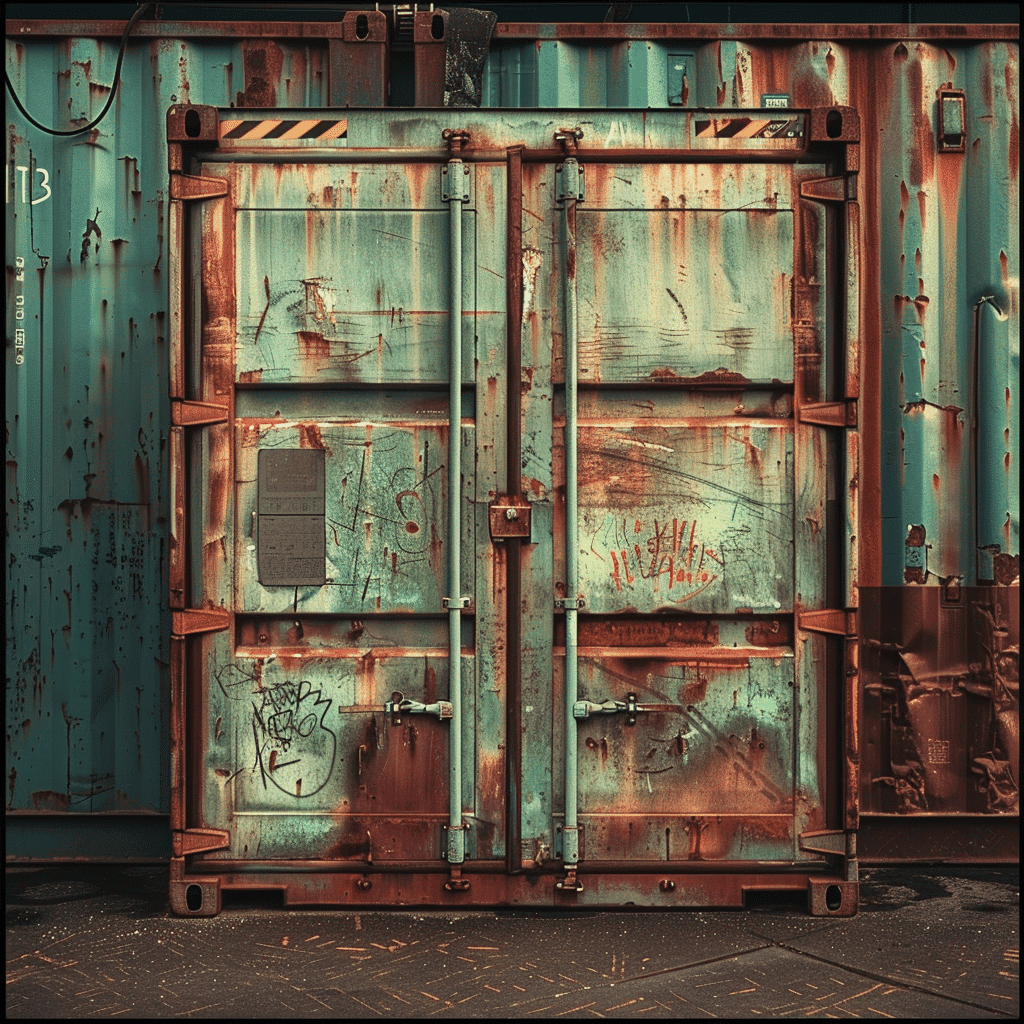Are you tired of spending hours packing a storage container? Well, you’re in luck! This article will show you how to pack a storage container in record time. Let’s get started!
When it comes to packing a storage container, efficiency is key. Whether you’re moving to a new home or simply decluttering, knowing just how much stuff and to maximize the space in your storage container can save you time and money.
A portable storage container offers convenience and flexibility, allowing you to pack and unpack at your own pace. Start by organizing your belongings into categories and decluttering before you begin packing your portable storage containers.
Utilize the vertical space by stacking boxes and furniture securely. Use packing materials such as bubble wrap and packing paper to protect fragile items. Don’t forget to label your boxes for easy access later.
Create a Plan
To ensure a smooth and efficient packing process, you can start by creating a plan for organizing and arranging your belongings in the storage container. Planning ahead is crucial to avoid any last-minute chaos.
Before you begin packing, gather all the necessary supplies such as boxes, tape, bubble wrap, and markers. Categorize your items into different groups based on their type and fragility. Make a list of the important items that need extra care and attention during the packing process. Ensure that you pack them separately and label them clearly.
Protecting your belongings is essential to prevent any damage or breakage. By creating a plan and following it diligently, you can pack your storage container in record time while keeping your items safe and organized.
Deciding What Items To Keep and What To Discard
When packing a storage container, it’s important to assess your belongings and decide what items to keep and what to discard. Before you start, make sure to have a clear understanding of the size and capacity of your storage container. This will help you determine how many items you can fit and what can be left behind.
Begin by sorting your belongings into categories such as essentials, sentimental items, and rarely used items. Ask yourself if you have used or worn the item in the last year. If not, it may be time to let it go. Consider donating or selling items that are in good condition but no longer serve a purpose. Remember, the goal is to maximize the space in your storage container, so be selective in what you choose to keep.
Once you have decided what to discard, you can find a suitable storage facility, such as a portable storage unit, to store your remaining items.
Buy Shipping Supplies
To ensure a smooth packing process, you should buy the necessary empty shipping containers and supplies and gather them in one place.
Start by purchasing packing tape, which will secure your boxes and prevent them from opening during transit.
Cardboard boxes are essential for organizing and protecting your belongings. Choose different sizes to accommodate various items.
Bubble wrap is perfect for fragile items like glassware or electronics. It provides a layer of cushioning to prevent any damage.
Stretch wrap is useful for bundling together loose items or securing furniture doors and drawers.
Lastly, don’t forget to get moving blankets to protect your furniture from scratches and dents.

Importance of Labeling and Organizing Boxes
The importance of labeling and organizing boxes can’t be overstated when it comes to packing a storage container in record time. Labeling boxes allows you to easily identify the contents of each box without having to open them all. This saves you time and effort, especially when you’re looking for specific items.
Additionally, organizing boxes based on their contents or the room they belong to makes it easier to unload and unpack the container once you reach your destination. You can prioritize which boxes to unload first based on their importance or the items you need immediately.
Methods To Safeguard Items, Especially Fragile Ones
Ensure the safety of your fragile items by securely wrapping them in bubble wrap and placing them inside sturdy boxes. When packing fragile items for storage, it’s essential to take extra precautions to safeguard them from any potential damage.
Start by selecting the appropriate size of sturdy boxes that can accommodate your fragile items without being too cramped. Line the bottom of the boxes with padding materials, such as packing peanuts or crumpled newspaper, to provide an extra layer of protection.
Carefully wrap each fragile item in bubble wrap, making sure to cover all sides and corners. Place the wrapped items in the boxes, ensuring that there’s enough padding between them to prevent them from shifting during transport.
Pack Your Items
Start by organizing your items into categories based on size and fragility. This will make it easier to pack your storage container efficiently. Group together small and fragile items that need extra protection, such as glassware or electronics. Use sturdy cardboard boxes or plastic bins to pack these items securely.
For larger items, like furniture or appliances, disassemble them if possible to save space. Place heavy items at the bottom of the container and lighter items on top, balancing the weight evenly.
Use packing materials like bubble wrap or packing peanuts to fill any empty spaces and prevent shifting during transit. To secure your items in the storage container, use loading straps or ropes to keep them in place.
Tips for Sealing Boxes and Dismantling Furniture
Seal your boxes securely using packing tape to prevent any items from falling out during transport. When packing a storage container, it’s important to ensure that your boxes are properly sealed. Start by folding the flaps of the box inward, then apply packing tape along the seams to hold them in place. Make sure to reinforce the corners and edges of the box as well.
If you have any fragile or valuable items, consider adding an extra layer of protection by wrapping them in bubble wrap before placing them in the box.
As for dismantling furniture, it’s a good idea to take it apart to save space in the storage container. Remove any removable parts, such as table legs or bed frames, and pack them separately. Label each piece and keep the necessary tools handy for reassembly later.
Following these tips will help you seal your boxes securely and dismantle furniture efficiently, allowing you to pack your storage container in record time.
Strategies for Efficient Loading
Maximize the efficiency of your loading process by implementing smart strategies.
When packing a storage container, it’s important to focus on efficient loading techniques to make the most of the available space.
Firstly, distribute the weight evenly throughout the container to maintain balance and stability. Place heavier items at the bottom and lighter ones on top to prevent any shifting during transport.
Secondly, maximize space utilization by utilizing every nook and cranny. Fill gaps with smaller items or use packing materials to prevent items from moving around.
Lastly, secure your belongings properly to avoid any damage. Use straps, ropes, or bungee cords to keep everything in place.
Importance of Weight Distribution and Maximizing Storage Space
To efficiently pack your storage container, evenly distribute the weight and utilize every inch of storage space.
Proper weight distribution is crucial to maintain balance and prevent damage to your belongings. Start by placing heavier items at the bottom to create a stable foundation. Then, distribute weight evenly from side to side and front to back. This will ensure that your container remains stable during transportation.
Additionally, maximizing storage space is essential to make the most of the available area. Use vertical space by stacking boxes and furniture, and fill any gaps with smaller items. This won’t only maximize the amount you can fit in the container but also prevent items from shifting during transit.

Load The Storage Container
Start by carefully arranging your items in the storage container, ensuring that they’re securely packed and organized. When packing a storage container, it’s important to make the most of the available floor space.
Begin by placing heavier items at the bottom to create a stable foundation. This will prevent any shifting or damage during transportation. As you load the portable storage unit, remember to stack items vertically to maximize space. Utilize the walls of the container by placing lighter items on top of the heavier ones.
This will help distribute the weight evenly and prevent any toppling over. Take advantage of any nooks and crannies by filling them with smaller items.
Complete a Final Check and Lock-Up
Before you lock up the storage container, take a final look around to ensure that everything is properly secured and in its place. This quick check will help you finalize the packing process and give you peace of mind knowing that your belongings are safe.
Begin by inspecting the walls and corners of the container to make sure that there are no gaps or empty spaces. Then, check the placement of fragile items and ensure that they’re adequately protected with bubble wrap or packing peanuts.
Next, secure any loose items or boxes by using straps or bungee cords. Finally, lock-up the storage container by double-checking that the lock is properly engaged.
Once this final check is complete, you can confidently leave knowing that your items are secure and ready for storage.
The Importance of a Final Review Before Sealing the Container
Take a moment to review and double-check the contents of the storage container before sealing it. This final review is crucial to ensure that everything is packed properly and efficiently.
Start by installing loading straps to secure items and prevent shifting during transportation. Make sure to utilize the available space efficiently by stacking items and using any gaps.
Check if any fragile items need extra padding or protection. Additionally, ensure that you have your own lock to secure the container.
A final review allows you to spot any missed items or potential issues before sealing the container, saving you time and hassle later.
Recommendations for Locks and Security Measures
Make sure you’re using a sturdy lock and implementing other security measures to protect your belongings while they’re in storage. When it comes to locks, opt for a heavy-duty padlock that’s resistant to cutting and tampering.
Additionally, consider using furniture pads to provide an extra layer of protection for fragile items. Wrap delicate pieces in plastic wrap or place them in garbage bags to shield them from dust and moisture.
To secure items in the container, use bungee cords or ratchet straps to prevent shifting during transit.
These measures not only ensure the safety of your belongings but also provide peace of mind knowing that your items are well-protected.
Space Requirements
When packing a storage container, consider utilizing vertical space by stacking boxes and utilizing the corners, but be mindful of weight distribution to prevent items from shifting during transport.
To maximize space in your storage container, it’s important to make use of more floor space. This can be achieved by placing larger and heavier items towards the bottom of the container, and lighter boxes on top.
Additionally, consider using portable moving containers, as they often provide the most storage space. These containers are designed to fit a variety of items and can be easily transported to your desired location.
Frequently Asked Questions
How do you pack a 20-foot container?
To pack a 20-foot storage container, it’s recommended to stack boxes and place lighter items above the heavier ones.
What is the best way to pack a storage bin?
For those looking to pack a storage bin efficiently, the choice of boxes is crucial. It’s best to opt for boxes that are dry, robust, and in good condition. Each box should be filled to its maximum capacity, using padding materials if necessary to fill any voids. When organizing a storage unit, furniture pieces should be prioritized and placed first. Proper organization, which includes grouping items based on their stackability and accessibility, is key. It’s also essential to ensure there’s a clear pathway inside the unit for easy access.
How do you pack a 16-foot container?
Packing a 16-foot container can be done by carefully following these instructions:
- Decide where you want the container to be placed. When doing so, ensure that there is proper space, including height.
- Prepare the items you wish to put into the container with protective wrapping and blankets. Be sure to have an inventory checklist during this step.
- Load the container section by section. Use larger furniture items to make a “base” on which the other items can be fit into. Secure the items with wire.
Conclusion
In conclusion, by creating a plan and considering factors such as space requirements and item organization, you can efficiently pack a storage container in record time.
Remember to decide which items to keep and discard, and choose the right container size based on your needs.
With proper planning and organization, you can make the most of your storage space and save time during the packing process.


